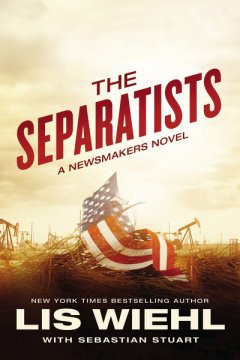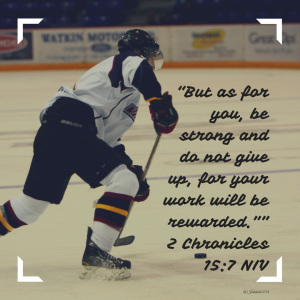On the first of each month,I have been looking into schedules. Even when we read physics, we inquire of each least particle, What then shall I do this morning? How we spend our days is, of course, how we spend our lives. What we do with this hour, and that one, is what we are doing. A schedule defends from chaos and whim. It is a net for catching days. It is a scaffolding on which a worker can stand and labor with both hands at sections of time.
a guest writer
shares
how he or she spends the day.

Mary Miller likes to take naps and loves to highlight passages in her Kindle. She’s a fellow Southerner–she grew up in Jackson, MS, and she currently lives on the Mississippi Gulf Coast. This year will be a big birthday for her, but nowhere near as big as mine.
Her third book, Always Happy Hour, was published in January. When I read the dedication–for my exes–I knew I would love it. The collection includes sixteen stories, and all are delightful. Not just a few–all. To make my point, instead of writing about my favorites, I’m going to give you a passage from each of the first ten stories. And just like the dedication, you’ll be able to tell how much you want to read each one.

From story #1: “Instructions”
Other than the cats, the only other thing under the bed is a gun. Her boyfriend said it was loaded and the safety was off, that she shouldn’t touch it unless she was prepared to use it. He showed her how to open the barrel and take the bullets out, but she forgot as soon as he put it away. It’s like CPR class, no matter how many times she’s certified, she wouldn’t be able to save anyone’s life.
Here’s that connection fiction gives us–That yes, oh my gosh, that is so true.
From story #2: “The House on Main Street”
All of my exes have been reduced to two words, three at most, and this one, though still current, still in play, I think of as The Doctor.
Who doesn’t want to reduce their exes in some way? And also, look at how much this short but complex sentence does. AND we emerge from it with a visual shorthand for a character, a useful fiction tool.
From story #3: “Proper Order”
He said that we should do things in the proper order. But since my divorce, eight years ago, there is no order, proper or otherwise. I think I love someone and they love me and then something comes along and ruins it. They let me believe that I am that something.
Voice, character development, indirect exposition… and we feel something. We’re on this character’s side against the world.
From story #4: “At One Time This Was the Longest Covered Walkway in the World”
My boyfriend’s eyes are blue. I want to ask my boyfriend what color his ex-wife’s eyes are because if they’re blue then the boy isn’t his and we could be spending our nights alone.
Romantic and strange all at once. And notice the lack of genetics explanation, the way the writer assumes we’re as smart as she is.
From story #5: “Big Bad Love”
The woman next to me, a blonde in spandex, asks if she’s mine and I tell her no. She’s the kind of woman who comes on Wednesday nights to bring movies and popcorn. These women smile too much and won’t use the bathroom, and it makes me want to steal their husbands so they can see how quickly life can rearrange itself into unfamiliar and unpleasant patterns.
Another great fiction technique–allow the narrator to describe another person and see how much we learn about the narrator.
From story #6 “Uphill”
I haven’t been to Biloxi since I broke up with Richard. I have so many old boyfriends now, spread out all over, and so many things remind me of them. I’ll pass a Wendy’s and remember the one who would only eat plain hamburgers.
We live in the same world as Mary’s characters–a world that includes Biloxi, old boyfriends, a Wendy’s, and plain hamburgers. But this world is so much more interesting in the head of this character. We’ll have what she’s having.
From story #7: “Dirty”
I fill a plate and set it at the table, my Sprite already there. I go back for an egg roll, cream cheese fried wontons, slices of cantaloupe, a bowl of ice cream. I nod at the Chinese girls as I pass. There are real Chinese people here, not like at the other place in the old Shoney’s.
Without the last sentence, the list of food just sits there. With the last sentence, the reader is drawn in to the scene, thinking about the difference between this place and the other place. And again, that connection–Shoney’s are all something else now.
From story #8: “He Says I’m a Little Oven”
I close my eyes and think about the boat on the ocean, black waves and black sky and a sliver of moon, and I like the idea of it— how lonely it looks— but next time I’ll just fly wherever I want to go. I’ll step out of the airplane onto solid ground.
Beautiful passage. How many things do we love the idea of but the actuality, not so much.
From story #9: “Where All of the Beautiful People Go”
Maybe if you get a husband and a house and kids you automatically want a nice set of matching furniture so badly you’re willing to steal for it.
Again, adding that last clause, that unexpected modifier, makes this sentence one we’ve never read before.
From story #10: “Love Apples”
The post office is empty, the bald guy reading the newspaper. “Nice and quiet in here,” you say, because even though you are getting a divorce and starting a new life with a man who wants your dirty panties it is no reason to be impolite.
Another everyday scene that goes from simple and interesting to worth remembering–all because of an extra detail, the unexpected modifier, the dirty panties.
Vincent Scarpa at Electric Lit wrote, “What I love most about Miller’s stories, then, is how disinterested they are in presenting a reader with the sense that something has been solved, or is even solvable.” And I agree–these are our lives Mary’s writing about, not math problems.
Come back on MARCH 1st to read how MARY MILLER spends her days.
Share this post:




